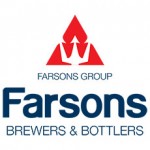By Derek Moss
On Tuesday 12th April, Liam Gauci gave a fascinating and interesting talk on the history of Maltese corsairing in the period 1760-1798. The event, organized by Flimkien għal Ambjent Aħjar, under the distinguished patronage of her Excellency Marie-Louise Coleiro, President of Malta, was held at the President’s Palace in Valletta. Unfortunately, her Excellency was unwell and was not able to attend the event.
The history of Maltese corsairing has been traced through thousands of documents and manuscripts – this labour of love has lead Liam Gauci to research 2,000 families over the years.Maltese corsairing was essentially legalised piracy, run as a commercial enterprise, which was closely regulated under the Knights of St.John, and which attracted local investors, who, along with the Knights of St.John and the corsairs, reaped the profits from plundered goods in the name of the Grand Master – the Prince of Malta.
The corsairs sailed privately owned ships, held an official title within a legal framework, and had to live and work within a set of laws and rights to which they could be held accountable on their return to Malta. Corsairing was run on the lines of any commercial enterprise, and captains who were renowned for their prowess had no difficulty in finding investors to fund their venture, who sometimes invested in kind, supplying ship’s biscuits, wine etc. Women took a leading role in this, often investing their dowries, in the hope of a good return. After a successful trip, corsairs would pay 10% of the value of their booty to the Order of St John, 5% to the Convent of St Ursula in thanks for the nuns’ prayers for a safe return, and the rest would be divided among the investors, captain and crew. Slave rowers on board might also get a cut, depending on their status.
The corsairing fraternity was roughly made up of two-thirds Maltese and Gozitans and one-third foreigners. Roaming the Mediterranean for the rich pickings to be found on Ottoman merchant shipping, Maltese corsairs came to be feared as redoubtable foes, leading many ship captains to simply surrender on sight of the Order’s flag on the corsairs’ galleys rather than face injury, enslavement or death.
The Maltese corsairs became more active in the period 1775-1798, attacking everything in the eastern Mediterranean pertaining to the Islamic Ottoman Empire, the enemy of the Catholic faith. Despite the prospect of untold wealth, dangers were very real and all upon the ship, from the captain to the lowest ranking sailor, knew that there was a high risk of death in battle, enslavement, and shipwreck and that their return home was never guaranteed.
You can buy Liam Gauci’s book, In The Name Of The Prince, directly from our sponsors by clicking here.
This event was sponsored by: Da Vinci Hospital, Dhalia Ltd, Mizzi Motors, D’Xquisite Caterers and Marquiz Winery.



